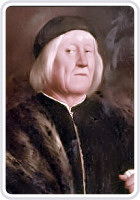The Cane Corso Art History has a plethora of connections to Italian Literature and Art. This breed was mentioned many times from famous writers of the fifteenth century onwards. I have only mentioned a few, however, there are many more connections that can be researched. As a history buff, I like to connect history to our favorite four legged friends. Cane Corso Art History is filled with many popular artists mentioning this great breed. I hope you enjoy!

Teofilo Folengo (1491-1544) tratteggia il Cane Corso nel mortale assedio all’orso o al leone ferito dal cacciatore: in quest’ultimo caso il Cane Corso viene come tale descritto in alternativa al nome usuale Molosso (“canes inter seu corsos sive molossus”).
Folengo Theophilus (1491-1544) outlines the Cane Corso in the deadly siege of a bear or lion wounded by a hunter in the latter case, the Cane Corso is described as such an alternative to the usual name Molosso ( ” canes inter seu corsos sive molossus ” ) .
Nicolo Macchiavelli (1469-1527) nel poemetto “L’asino”:
“Vidi una volpe maligna e ‘mportuna che non truova ancor rete che la pigli; e un Can Còrso abbaiar alla luna”.
Nicolo Machiavelli (1469-1527) in his poem ” The Donkey ”
“I saw a fox and a Cane Corso barking at the moon .”
Erasmo di Valvason (1523-1593), letterario trasferitosi dal suo feudo in Friuli alla corte mantovana (1591), comprende nel termine corso sia un tipo di mastino – oltre che alla presa – dell’orso, del lupo e del cinghiale. Ecco la descrizione efficacissima di quest’ultimo:
“Come il Veltro sia destro et sia spedito
ma di persona più gagliarda et magna:
sia grosso, ma non grave od impedito
da tanta mole, che la lena fragna;
abbondi di grand’osso et di gran nerbo
et sia facile a l’ira, aspro et superbo.
Si noti che il Valvason, per descrivere il Cane Corso, meglio non trova che stabilire confronti con gli estremi opposti: da una parte, espressamente, con il Veltro (grossomodo l’attuale Levriero), di cui possiede l’agilità ma non l’esilità fisica; dall’altra, implicitamente, con il cane di grossissima mole (sul tipo del mastino napoletano o del mastiff inglese), dalla cui pesantezza si distanzia per liberarsi nella corsa resistente e nevrile.
Valvason of Erasmus (1523-1593) , who moved from his literary feud in Friuli in the court of Mantua ( 1591 ) , includes within the course is a type of mastiff – in addition to the socket – the bear, the wolf and the wild boar . Here is the description of the latter very effective :
” As the Greyhound is dexterous and is shipped
but in person more vigorous
is big , but not serious or disabled
by such amount abundant in great vigor and strength
is easy to anger, harsh and proud.
Note that the Valvason to describe the Cane Corso , which is better not to draw comparisons with the extremes : on the one hand, specifically , with the Greyhound ( roughly the current Greyhound ) , which possesses the agility but not the ‘ physical thinness and on the other , by implication, with the dog of very big mole ( the type of the Neapolitan mastiff mastiff or English), from which distances itself heaviness in the race to get rid of resistant and nervous behavior .
Tito Scandiano John , in the ” Poem of the Hunt” ( 1556 ) , portrays the Cane Corso in the powerful and formidable assault socket ( ” to attack , bite and tear boars, bears and wolves ” ) .
And yet another poetic testimony of Giovan Battista Marino (1569-1625) , which tells the myth of Actaeon , a formidable hunter turned into a stag by Artemis for vengeance , because he dared to compete with the goddess to practice hunting and spied her while diving naked in a source , then chased and then torn to pieces by his own dogs .
The same is depicted along with Actaeon Diana fountain in the palace of Caserta ( 1790 ) along with his dogs, among which stands out a dog with cropped ears very similar to today’s Cane Corso .
Giovanni Verga, in ” Medlar Tree” (1881 ) says: ” He bites worse than a Cane Corso ” The Tommaseo , in his vocabulary , a parable : ” Can the course , a man of fair appearance and attitude ”
For updates on cane art corso history join our twitter.